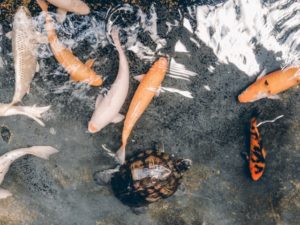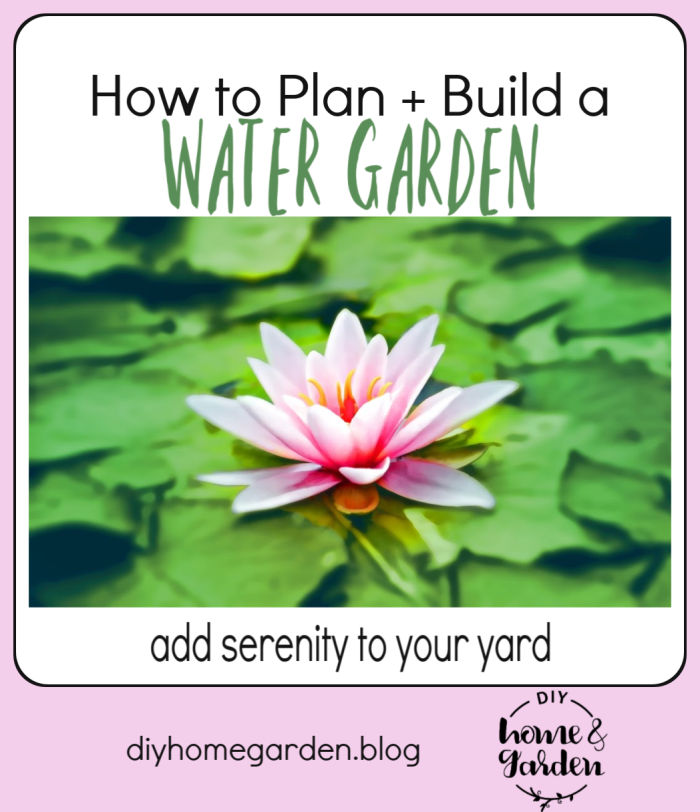Water gardens used to be out of reach for most gardeners because of the high cost and difficulty in using concrete – which is the primary material used in making ponds.
With the advent of newer and cheaper technologies (like PVC lining and fiberglass), water gardens are now as accessible as ever.
If you want to find out more information on how you can start your first water garden, read on.
Planning Stage
Choosing your site
There are three things to consider when picking a location for your water garden. The first is underground utilities. Before you start digging the plot, make sure that you will not be obstructing any pipes or cables. Second is sun exposure. Most aquatic plants need four to six hours of daily sunlight to grow properly. The third is the slope of the land to avoid rainwater runoff.
Sketch your plan
Visualizing your garden’s layout on paper is essential. It will help you in making estimates of the number of materials you need and in planning how and where to locate components of your design. It saves you time in the long run.
Select plants
Three kinds of plants should grow in your garden–floating, submerged and edge plants. Floating plants provide shade for the water. It keeps the pond clean by absorbing dissolved nutrients and suppressing the growth of algae. Examples of floating plants include water hyacinth, duckweed, and water lilies.
As the name suggests, submerged plants like hornwort or Sagittaria only grow beneath the water’s surface. They do not require soil or special fertilizer because they get their nutrients directly from the water through their stems and leaves. Edge plants flourish on the moist soil several inches below the surface. Filipendula, Japanese and Siberian irises are just some examples. They also provide shelter for fish, frogs, and other plant life.
Choose fish
Decide on the fish you’ll add once you complete your water garden. Adding a few varieties of fish can add fun and color to your water garden. Not only do they help keep the mosquito population at bay, but their waste can also be a source of nutrients for the plants.
Where permitted, goldfish are the best option for your pond. They’re relatively small (although some are known to grow up to a foot), less destructive, and don’t habitually eat plants. Koi fish are also a popular option, especially for Japanese-themed gardens. They’re large, colorful, and live longer. Keeping the balance between the plants and the fish is important. Too many can lead to algae blooms.
Prepare equipment
If you plan to build a waterfall on the edge of your pond, you can install an entire system using Hunter irrigation parts to provide artificial pond irrigation. This helps prevent water stagnation that often attracts mosquitoes.
Start digging
A common mistake made by beginners when digging the plot is to start at the edge. When you do so, it will be hard to bring your wheelbarrow to where you’re digging. A more efficient way is to start digging at the center. Make sure to constantly check the depth of the pond and the evenness of the edges.
Before lining the pond, you have to put an underlayment first which is a felt like material that prevents sharp objects from puncturing the liner. When laying the liner, make sure to sufficiently cover the bottom, walls, and edges. Don’t worry too much about the pleats, they will be covered anyway when you start doing the landscaping around the edges.
Like any DIY project, the first few steps are always the hardest because it’s something you haven’t it tried before. Water gardens are no exception, but with a few tinkerings and help from your friends, you too can enjoy a small piece of paradise.
- Are Geraniums Annual or Perennial? - 09/21/2024
- DIY Home & Garden: Featured on ApartmentGuide - 09/21/2024
- Bacon: Creative Uses That Go Beyond the Breakfast Table - 09/08/2024




